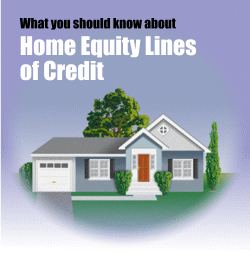

Glossary
Annual membership or maintenance fee
An annual charge for access to a financial product such as a line of credit, credit card, or account. The fee is charged regardless of whether or not the product is used.
Annual percentage rate (APR)
The cost of credit, expressed as a yearly rate. For closed-end credit, such as car loans or mortgages, the APR includes the interest rate, points, broker fees, and other credit charges that the borrower is required to pay. An APR, or an equivalent rate, is not used in leasing agreements.
Application fee
Fees charged when you apply for a loan or other credit. These fees may include charges for property appraisal and a credit report.
Balloon payment
A large extra payment that may be charged at the end of a mortgage loan or lease.
Cap (interest rate)
A limit on the amount that your interest rate can increase. Two types of interest-rate caps exist. Periodic adjustment caps limit the interest-rate increase from one adjustment period to the next. Lifetime caps limit the interest-rate increase over the life of the loan. By law, all adjustable-rate mortgages have an overall cap.
Closing or settlement costs
Fees paid when you close (or settle) on a loan. These fees may include application fees; title examination, abstract of title, title insurance, and property survey fees; fees for preparing deeds, mortgages, and settlement documents; attorneys' fees; recording fees; estimated costs of taxes and insurance; and notary, appraisal, and credit report fees. Under the Real Estate Settlement Procedures Act, the borrower receives a good faith estimate of closing costs within three days of application. The good faith estimate lists each expected cost as an amount or a range.
Credit limit
The maximum amount that may be borrowed on a credit card or under a home equity line of credit plan.
Equity
The difference between the fair market value of the home and the outstanding balance on your mortgage plus any outstanding home equity loans.
Index
The economic indicator used to calculate interest-rate adjustments for adjustable-rate mortgages or other adjustable-rate loans. The index rate can increase or decrease at any time. See chart Selected Index Rates for ARMs over an 11-year Period in the Consumer Handbook on Adjustable Rate Mortgages for examples of common indexes that have changed in the past.
Interest rate
The percentage rate used to determine the cost of borrowing money, stated usually as a percentage of the principal loan amount and as an annual rate.
Margin
The number of percentage points the lender adds to the index rate to calculate the ARM interest rate at each adjustment.
Minimum payment
The lowest amount that you must pay (usually monthly) to keep your account in good standing. Under some plans, the minimum payment may cover interest only; under others, it may include both principal and interest.
Points (also called discount points)
One point is equal to 1 percent of the principal amount of a mortgage loan. For example, if a mortgage is $200,000, one point equals $2,000. Lenders frequently charge points in both fixed-rate and adjustable-rate mortgages to cover loan origination costs or to provide additional compensation to the lender or broker. These points usually are paid at closing and may be paid by the borrower or the home seller, or may be split between them. In some cases, the money needed to pay points can be borrowed (incorporated in the loan amount), but doing so will increase the loan amount and the total costs. Discount points (also called discount fees) are points that you voluntarily choose to pay in return for a lower interest rate.
Security interest
If stated in your credit agreement, a creditor's, lessor's, or assignee's legal right to your property (such as your home, stocks, or bonds) that secures payment of your obligation under the credit agreement.
Transaction fee
Fee charged each time a withdrawal or other specified transaction is made on a line of credit, such as a balance transfer fee or a cash advance fee.
Variable rate
An interest rate that changes periodically in relation to an index, such as the prime rate. Payments may increase or decrease accordingly.
What You Should Know about Home Equity Lines of Credit | Federal Agency Contacts | Checklist
Last update: July 8, 2008